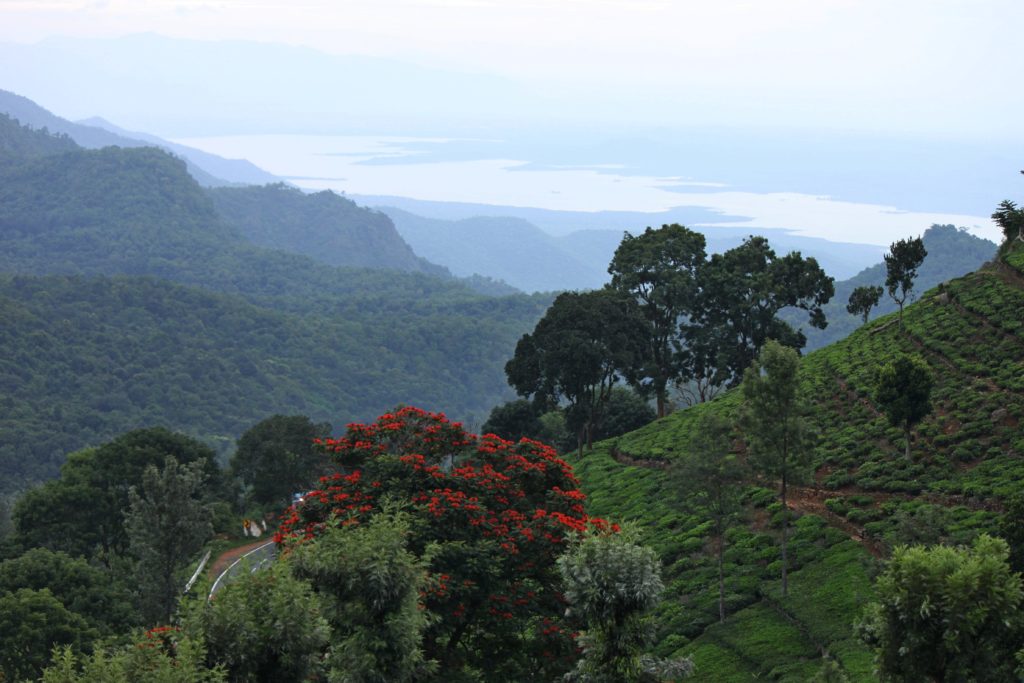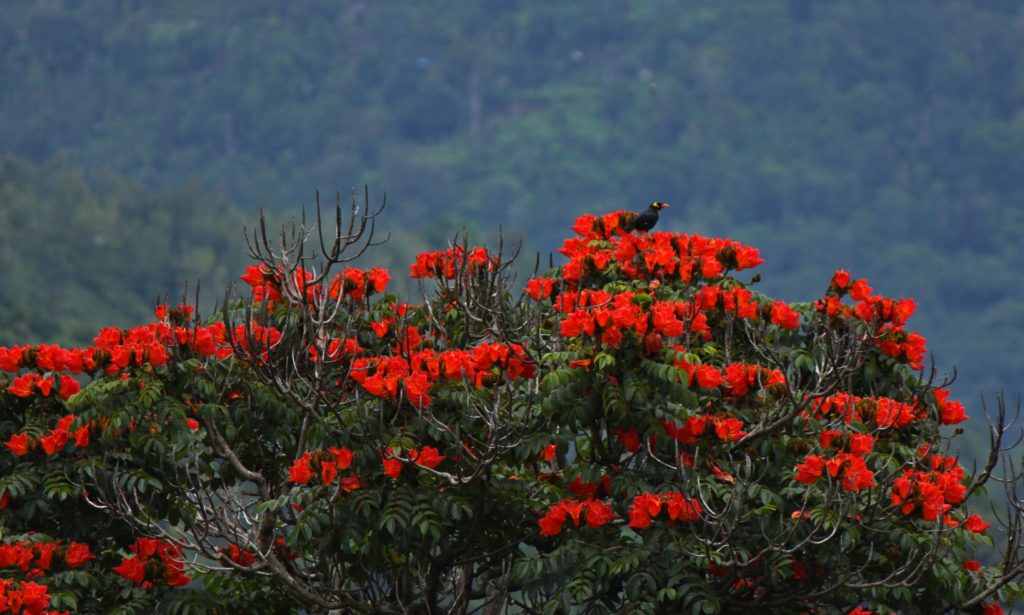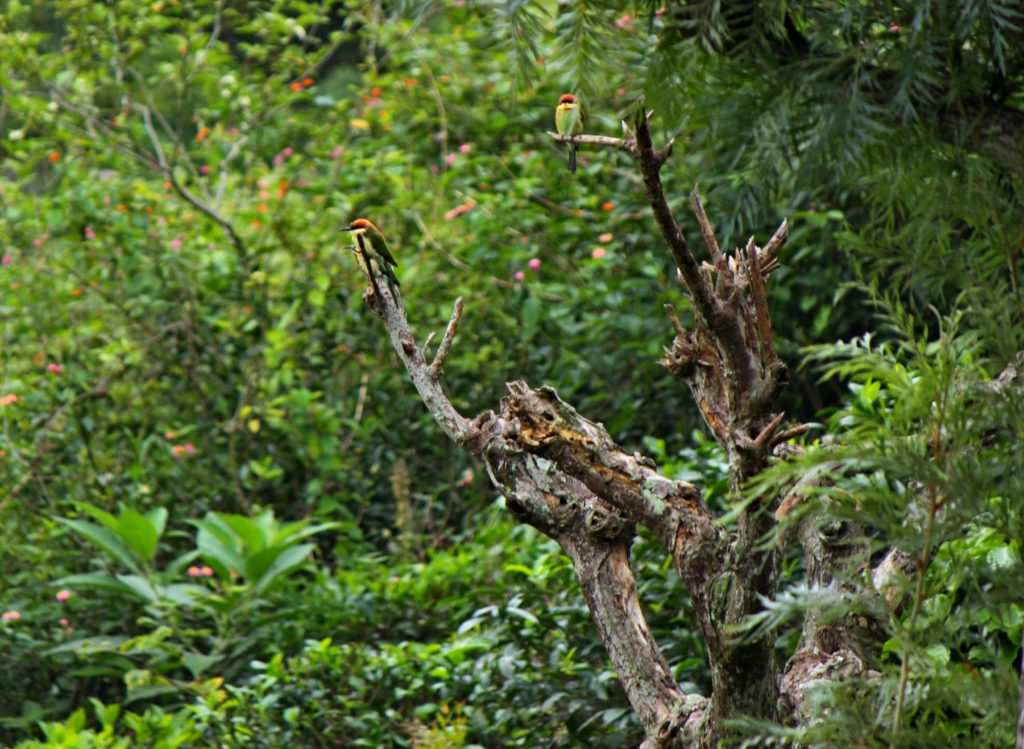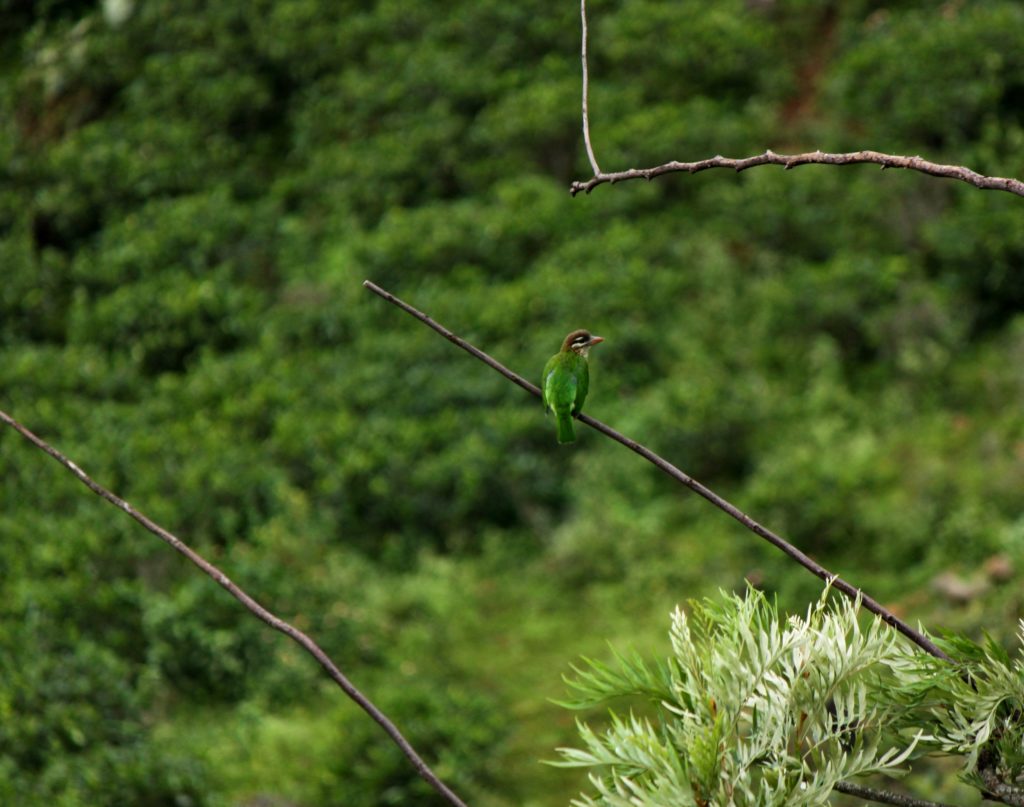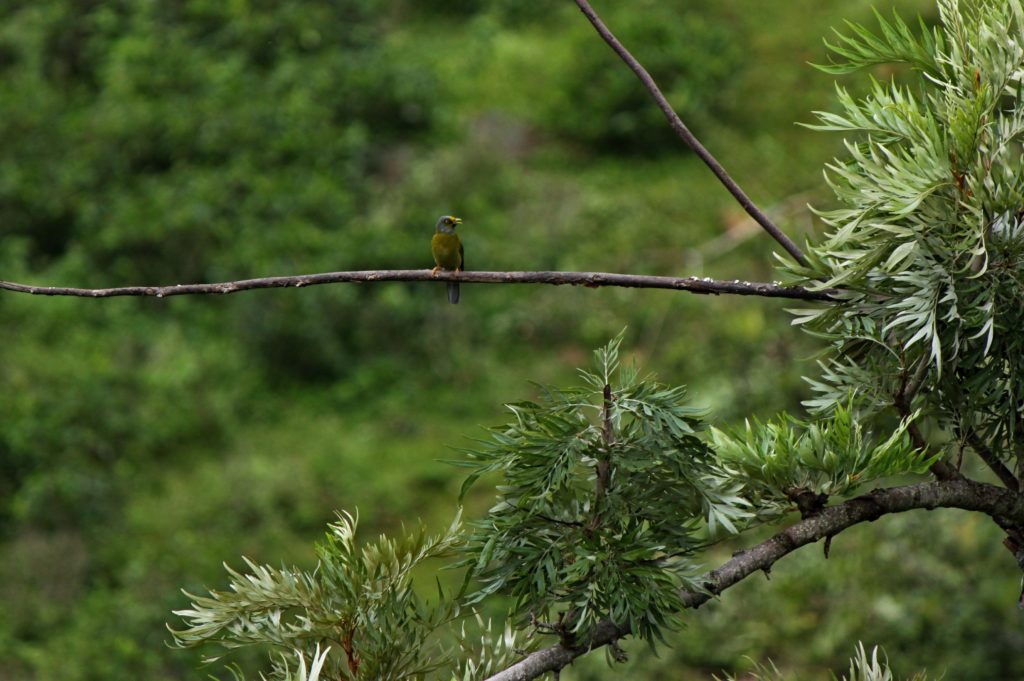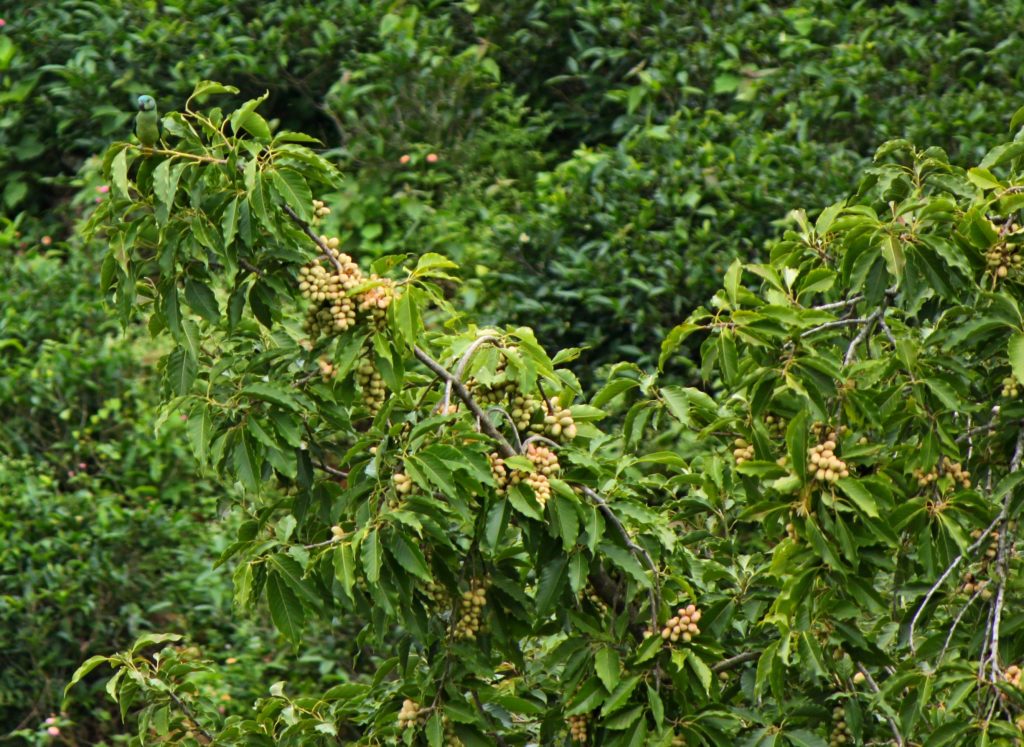Any bird bereft of its landscape only speaks half the story. Birdwatching is not just about zooming the lens on the bird.
Join us on this birding trail in Mullur, with a new eye to take in the larger picture. Please carry binoculars, field guide, water.
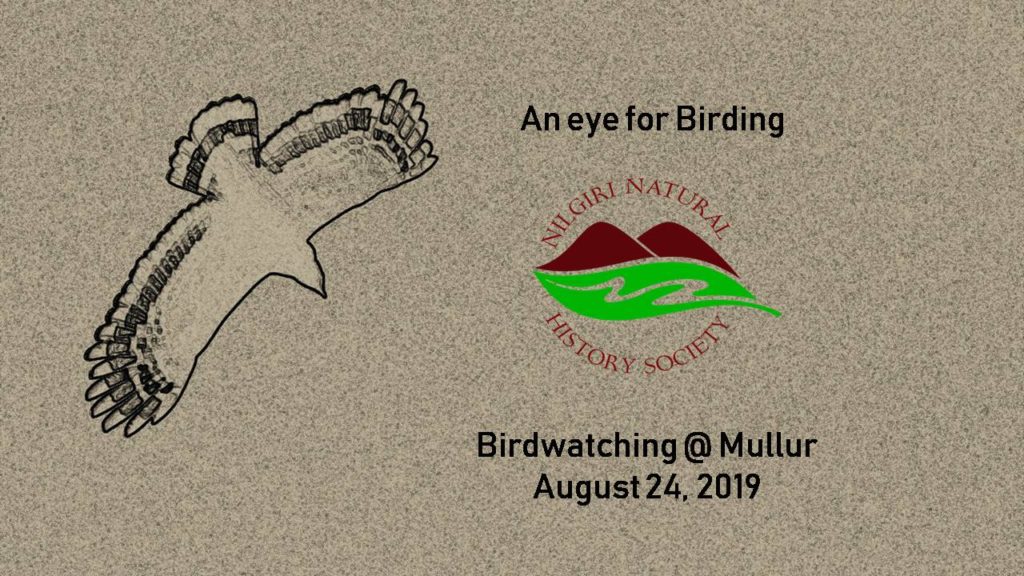
Date: 24th August, 2019
Time and Place: 6.30 am, Johnson Square
Duration: 3 hours
Trail difficulty: Easy
Cost: NNHS members: 250/- | Non-members: 300/-
For registration, write to contact@nnhs.in
Sharada: 9900522052
A short account of the birding (by Sharada Ramadass)
It was a wonderful day for birds and birding, as we drove down to Mullur early Saturday morning. A slightly cloudy sky, not the best of times for photography, but was great as we were greeted by a symphony of bird calls even as we started walking by a small path in a tea estate.
The first to catch our eyes were the iridescent blue of the male fairy bluebirds, alongside the dull blue coats of the female, as pairs after pairs of them flew overhead across the valley to the other side. The unmistakable calls of the prinia from behind the lantana turned our focus to a bush and shrubbery where oriental white eyes were busy starting the day’s foraging. Soon, male scarlet minivets, with their bright orange-black feathers, and the duller yellow coloured females flew in. The commonly sighted red-vented and red-whiskered bulbuls were aplenty making their presence known with their characteristic calls. Agal Shivalingam, our resource person for the landscape, drew our attention to a sweet and melodious almost cat-like call coming from a black bird with an orange beak, perched on one of the dried branches of a silver oak. And what might it be? Of course, it was a party of square tailed bulbuls, as they kept hopping from branch to branch, in and out of sight. Another beautiful endemic bird of the bulbul family was the grey-headed bulbul which made fleeting appearances from behind the thickets, but could be followed by its distinctive call. Elsewhere a group of babblers, including the endemic rufous babblers were creating a ruckus, which is what babblers do best. Right around that time, we heard the characteristic call of the barbet, as we spotted a couple of white-cheeked barbets, flying between trees. A pair of chestnut headed bee-eaters kept making sorties from their perches, to catch insects. Far down below, on one side was the waters of the Bhavani, while on the other side, the toy train was chugging and whistling its way up the mountains.
Amidst this medley of songs and birdcall, our ears caught a series of shrill and loud whistles, screeches and gurgles from an African tulip tree, in full-bloom, across the road. As we turned around, there it was – a flock of hill mynas feeding on the flowers. Smaller and thinner than the common or jungle mynas, their dark black feathers and bright orange yellow patches on the head made them stand out in stark contrast amongst the red flowers. A couple of hanging vernal parrots were also busy on that tree, going about their breakfast business of the day, alongside a flock of jungle mynas. Very soon a flock of Malabar parakeets joined in the fun, and as we looked on, the musical reached a crescendo as this mixed party continued feeding on the same tree. In the background, from a distant stream down in the valley our schoolboy was making himself heard with his lazy whistling that went on for quite some time. A hard to spot bird, because of its preference for dark undergrowth, the Malabar whistling thrush is a beautiful bird that is more heard than seen. Elsewhere, the tiny crimson-backed sunbirds were found defending territories of nectar plants, from their perches.
A short wait opposite a Michelia tree laden with fruit, saw many birds visiting the tree, for perch as well as food. As we sat, marvelling at the myriad colours, calls, preferences and co-existence patterns of these birds, we were in for a treat, as a flock of great Indian hornbills flew into our frame of sight, gracefully, one after another. Within no time we had counted close to 8 of them landing on the distant trees. Every minute of the two and a half hours spent watching these amazing creations of nature was filled with a sense of wonderment. It is hard to put a value to experiences such as these, as they deeply inform us about a landscape and the need for its preservation. Many of the species observed during this birding trip are restricted in range to India, Asia or even the Western Ghats. A strong reminder that we share these spaces with many other vocal individuals whose voices need to be heard.

